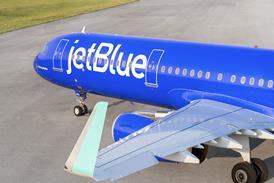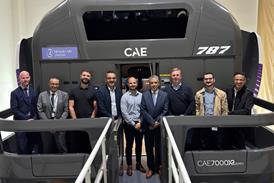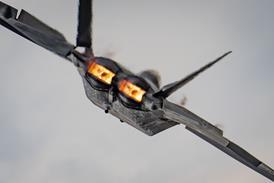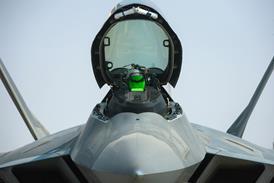The folks at Honeywell have not been getting much sleep of late – but that's only to be expected whenever there is a new arrival in the family.

On 25 June, Honeywell's bouncing baby AS907 engine was ‘christened' when it was awarded Federal Aviation Administration (FAA) certification.
Like all proud parents, Honeywell's engineers talk glowingly of the engine – the company's first all–new turbofan for a decade – which will power Bombardier's new super-midsize Continental business jet. A full-size cutaway of the engine is on display here at Honeywell's stand (Hall 1, A15).
The AS907 saw its beginnings at Farnborough 1998, when Honeywell announced plans for the new engine family. Since then, there has been a whirlwind of activity at Honeywell's Phoenix, Arizona plant leading to June's double celebration when the AS907 received both its type and its production certifications on the same day.
"We've taken a clean sheet of paper and some dreams and turned that into a reality," comments Mike Redenbaugh, Honeywell's vice-president and general manager, propulsion systems. "It's our baby and there's a lot of pride there."
Pride
AS900 product line manager John Ricciardelli admits there was much excitement among managers and engineers on the eve of certification. "There was too much adrenalin going on that night – I didn't get much sleep," he says.
But with the certification milestones accomplished, the AS907 is on the home straight for entry into service next year on the Continental.
By that time, however, the 7,000lb (30kN) thrust engine will be anything but a novice.
With some 18 engines in test at Honeywell and another 10 engines in flight test at Bombardier, the aircraft has chalked up an extensive log of test hours, including over 18,600h of engine development and certification testing and more than 4,000h of flight testing.
And work goes on with the post certification testing on five engines that will continue through mid–2003. "This is a fundamental element of the Honeywell product development and introduction process," notes Redenbaugh.
The heavy focus on testing and reliability from programme start should pay dividends for customers, Honeywell believes.
"The AS907 was designed to meet our customers' expectations for high reliability, durability and low cost of maintenance," says Steve Loranger, Honeywell president of engines systems and services.
"This engine will enter service FAA approved for on-condition maintenance, a level of reliability that no other business aviation engine in this thrust class can match."
Earlier this year, the engine passed bird ingestion, blade out and FAA 150h endurance tests with flying colours.
In what Honeywell engineers describe as their ‘shake ‘n' bake' programme, they have also put the AS907's line replaceable units (LRUs) through their paces with the aim of having no unplanned line events once this engine is out in the field.
Graduate
"We broke components, we fixed them and put them back and we were never able to duplicate that break," says Ricciardelli. "So far, our generation two LRUs have not met with any snags or issues, so we are very confident. This baby is really a graduate student."
The AS900 programme is a global effort with partners that include Magellan Aerospace of Canada, IPT of Spain, Techspace Aero of Belgium, Shimadzu of Japan and AIDC of Taiwan.
Bombardier's Continental order book stands at 125 aircraft so far. Honeywell has delivered 23 engines to the Canadian manufacturer and expects its production rate by 2004 to reach 60 engines a year.
Like new parents everywhere, Honeywell is already looking to the AS907's future potential. The engine could be grown to 9,000lb (40kN) thrust, perhaps lending itself to small regional jet applications. "It could certainly meet the rigours of regional jet use if needed," says Rob Wilson, Honeywell vice-president, AS900 programme. He says there are ‘emerging discussions', but nothing envisioned in the near term.
Source: Flight Daily News























